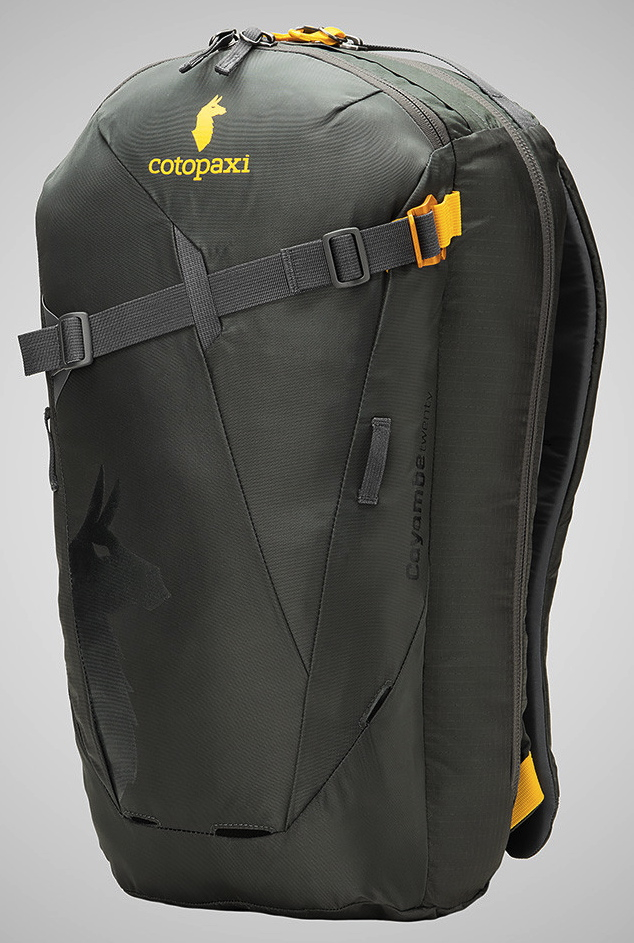
Cotopaxi Cayambe – 20L Ski Pack
Manufacturer Stated Specs:
- Weight – 1080 grams (2.38 lbs)
- Volume – 20 liters
- Dimensions – 53 x 28.5 x 13cm (20.8 x 11.25 x 5.1 inches)
Features:
- Speed buckle diagonal ski carry / front snowboard carry
- Front zippered avalanche gear pocket
- Helmet carry loops
- Fleece-lined sunglasses / goggles pocket
- Internal insulated hydration sleeve
- Gear loop and zippered pocket on waist belt
- Padded, breathable back panel and shoulder straps
Cotopaxi is a new outdoor gear & apparel company based in Salt Lake City. And while boutique outdoor gear brands are cropping up everywhere, Cotopaxi has differentiated itself by placing a very strong emphasis on social responsibility. Their stated intentions are not only to make gear from the “highest quality, durable materials,” but to “inspire companies to do more for the world.” And each product they sell is tied to a humanitarian cause. They state:
“For example, buy a Cusco pack and help educate a child in Peru for one week at Qosko Maqi. When you buy a Cotopaxi +India water bottle, you give clean water to a person in India for six months through our partner, charity: water.”
There’s nothing not to like about that.
Cotopaxi reached out to Blister to test and to get input on their new, ski-specific products as they continue to work on improving their performance.
I have spent the past several weeks touring with the Cotopaxi Cayambe 20L Ski Pack, and here’s my take on it.
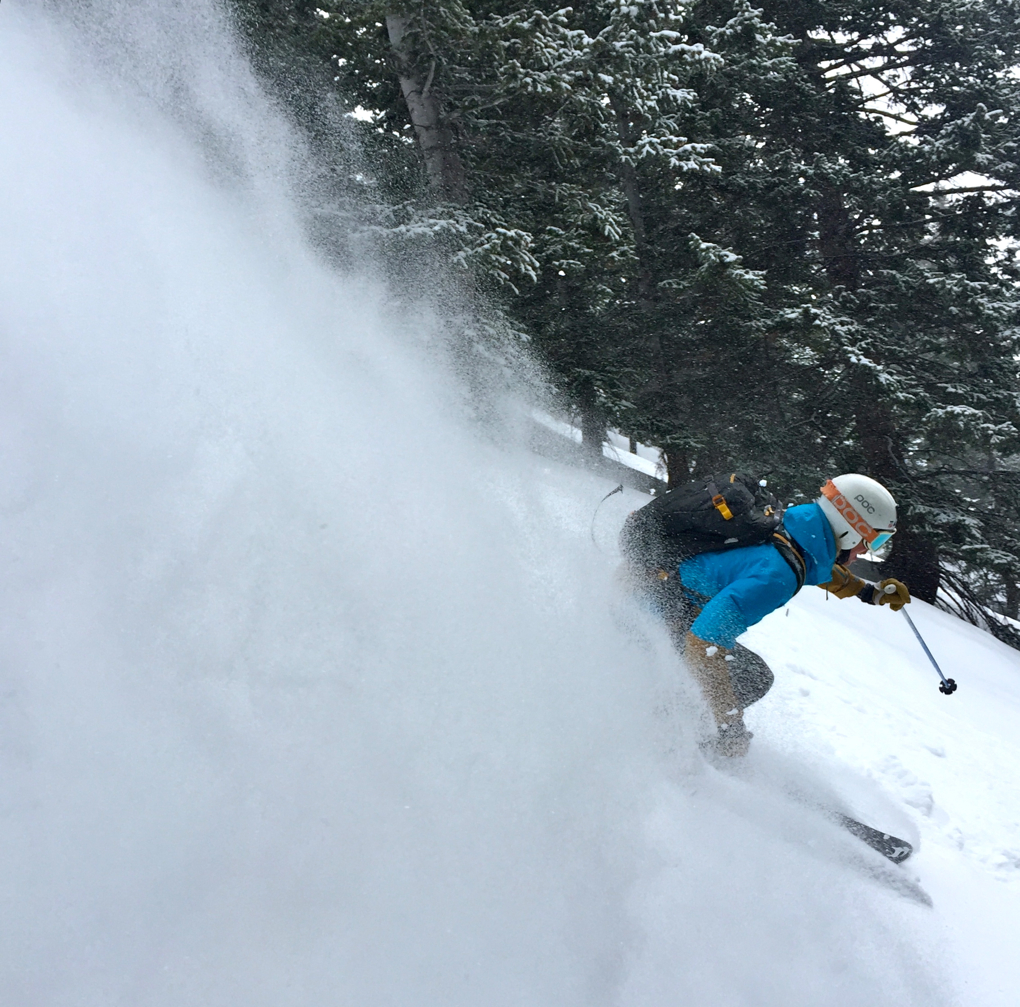
Points of Comparison
Prior to testing the Cayambe, I had a ‘two pack-quiver’ for my backcountry adventures: the Gregory Targhee 18L for “light and fast” days, and a 65L backpacking pack for days requiring more gear. I will be primarily comparing the Cayambe to the Targhee, as the intended use for these packs is quite similar.
Uses
The Cayambe is intended for day trips in the backcountry and / or sidecountry. I found it to serve this function well, as my downhill helmet, gloves, two one-liter water bottles, a light puffy jacket, avalanche gear, and miscellaneous small items just about maxed out the pack.
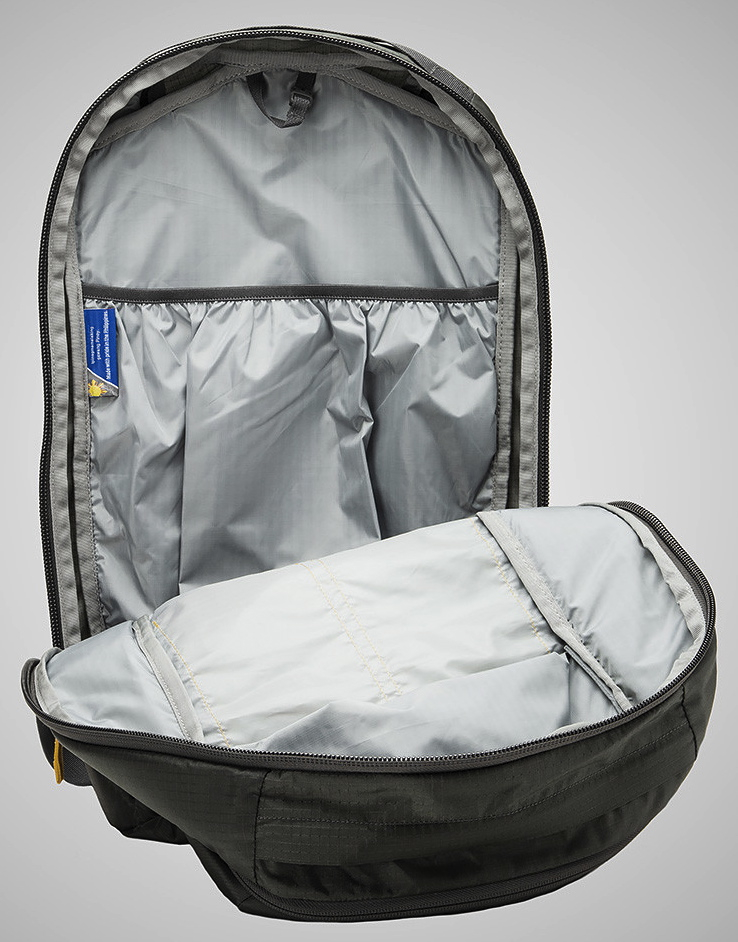
I have also used the Cayambe for some light ski mountaineering adventures.
I was able to swap out my typical ski helmet with a climbing helmet and harness, and the latter two took up about the same amount of space.
There are two options for attaching an ice axe to the pack (a pin that fits through the carabiner hole, and the traditional ice axe loop) that are both easy to use. It is also easy to carry an ice axe while still utilizing the ski carry system.
The Cayambe is too small for more advanced ski mountaineering and multi day trips. The 20L size doesn’t provide enough room for a rope or climbing gear, or the gear required for an overnight trip.
Diagonal Ski Carry
This pack currently has one critical flaw that can present a safety issue. The weight of skis strapped onto this pack with the diagonal ski carry system is enough to gradually pull the zipper to the main pocket open. This can progress to the point where the entire main compartment flops open, dumping the contents and leaving the skis hanging from the unattached front flap of the pack. I can’t recommend the current version of this pack to anyone who plans on using the ski carry system to hike with their skis on their back.
This happened to me several times, but the last and most frightening time occurred while I was scrambling up some fairly exposed, loose rock at the top of a couloir. With just ten feet left to go until the summit, I felt the weight of my pack shift. I looked down to see my water bottles, helmet, and goggles bouncing down the slope towards my partner below me. I then noticed that my skis were no longer oriented vertically, but were hanging horizontally with the tips and tails getting caught on the rocks around me. I scrambled the last ten feet to the top and was able to retrieve my lost gear on the descent, but in a different situation, that could have led to lost gear at best, and an accident at worst.
This being said, Cotopaxi is a very new company, and they have very actively solicited feedback to help improve their products. So while this is a significant issue with this pack, we will report back if and when they address the issue in the next version.
And if you do choose to buy this pack, moving the main pocket’s zippers all the way to one side of the pack will mitigate the problem.
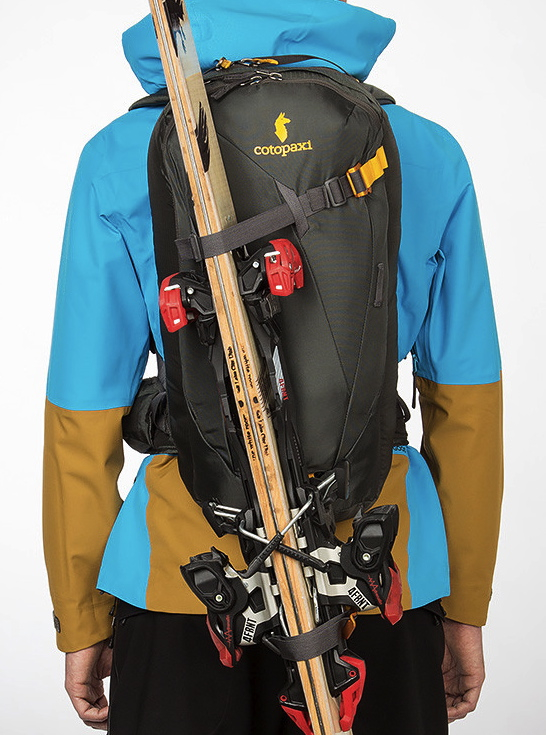
Fix that significant flaw, and the Cayambe has the potential to be a solid option in the ski / snowboard pack market.
Pockets
The Cayambe has three pockets: a pocket for a shovel and probe, a pouch for small items, and a main compartment.
(Cotopaxi has excellent detail shots of the Cayambe on their website. Click on the link to their product page below.)
The shovel- and probe-specific pocket is a nice feature. My Black Diamond avalanche shovel and probe fit well in the sleeves provided, and are easily accessible in case of an accident.
The pouch for small items is also sized well, and is easy to access. I use this pouch to hold my WFR field guide, sunglasses, snacks, headlamp, voile strap, pocket knife, chapstick, and a small length of cord. It has a small, fleece-lined pocket to fit sunglasses or ski goggles. I found it to be a great size for sunglasses, but a little bit too small to easily hold my POC ski goggles.
As I mentioned before, the main pocket has the significant flaw of potentially being pulled open by the weight of a pair of skis. Beyond this, there are a few other features of this pocket that I would tweak.
The zippers extend all the way down the sides of the pack, which allows for easy access to everything in the pocket. However, the pack has little structural rigidity, making both sides feel rather “floppy”—when opening the pack with the front pocket full of avy gear, it can flop open unexpectedly. I actually lost a water bottle this way (it was recovered 1000’ down the mountain on the return skin track). Opening the pack with the front face down in the snow mitigates this issue.
It seems like both of these issues (the pack being pulled open by the weight of a pair of skis, and flopping open while loading/unloading) would be fixed by moving the zipper from the top / outside of the pack to the back panel of the pack.
Straps
The straps used for fitting the Cayambe (waist belt, shoulder straps, and the chest strap) are all effective. The waist belt is especially easy and smooth to adjust, but the buckle is small enough that it can be difficult to clip and unclip with large gloves and cold fingers.
The Cayambe employs a diagonal ski carry system. I found the straps involved in the ski carry system to be difficult to adjust, especially with large gloves and cold fingers. That being said, once these straps have been adjusted to the desired length, they do not slip.
The Cayambe also offers a “speed buckle” carry system that I think is quite interesting. This system is intended to allow skiers to attach their skis to their packs without taking the pack off. This system is intended to be used for quick transitions and shorter bootpacks, while the more traditional diagonal carry system is used for longer bootpacks.
This speed buckle carry system is effective if set up beforehand. The user must extend the bottom strap of the ski carry system so that it has a lot of slack, so that they can slide the tails of their skis through the strap with it still attached to their back. There is a second strap that is housed in one of the shoulder straps that then wraps around the shovel of the skis and secures them to the pack. When set up beforehand, this system effectively serves its purpose.
Sizing
The pack comes in one size, which ended up being a little small for me. But I am 6’5”, so that’s not a real surprise. It is still a comfortable pack for touring all day, but the bottom of the pack rests just above the small of my back. I would prefer it if the bottom rested on the small of my back so that most of the pack’s weight could rest on my hip bones, via the waist belt.
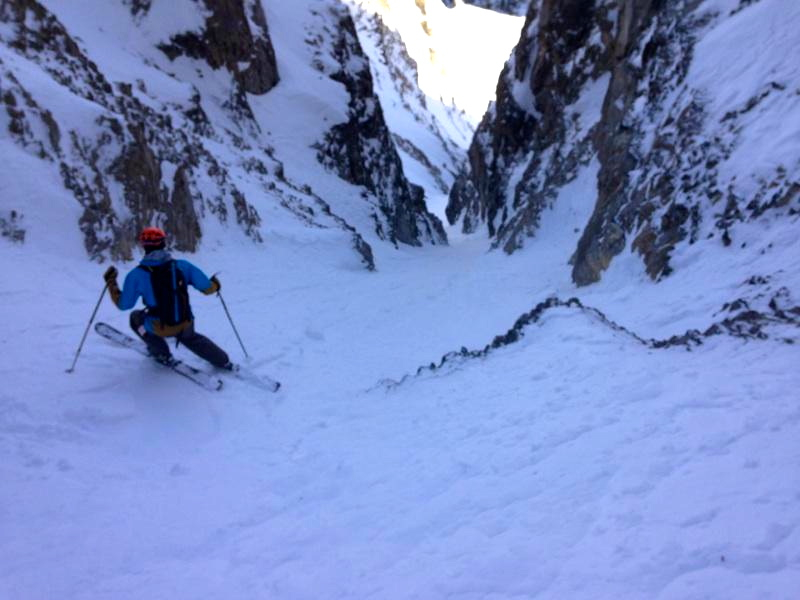
Bottom Line
Cotopaxi is a company that intends to do tangible good in the real world, and we applaud that. But that’s only half of their platform, and their goal of making great products needs to match their commitment to social responsibility. The current iteration of the Cayambe ski pack, while promising, needs to be tweaked.
I am confident that they will fix these issues in the near future, and when they do, the Cayambe has the potential to be a solid option in the category.
